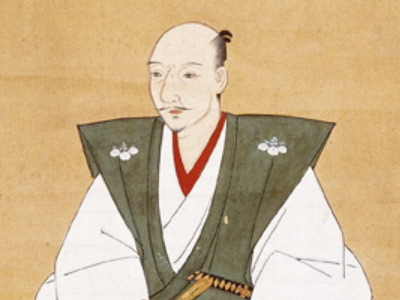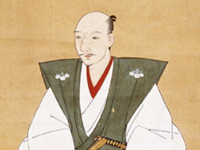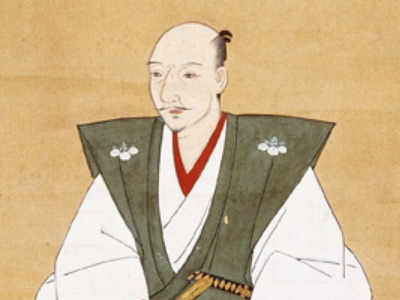Oda Nobunaga (1534-1582)

Coup at Honnō-ji and death
In 1582, Nobunaga's former sandal bearer Hashiba Hideyoshi invaded Bitchū Province, laying siege to Takamatsu Castle. The castle was vital to the Mori clan, and losing it would leave the Mori home domain vulnerable. Led by Mōri Terumoto, reinforcements arrived outside Takamatsu Castle, and the two sides came to a standstill. Hideyoshi asked for reinforcements from Nobunaga.
It has often been argued that Hideyoshi had no need for reinforcements, but asked Nobunaga anyway for various reasons. Most believe that Hideyoshi, envied and hated by fellow generals for his swift rise from a lowly footman to a top general under Oda Nobunaga, wanted to give the credit for taking Takamatsu to Nobunaga so as to humble himself in front of other Oda vassals.
In any case, Nobunaga ordered Niwa Nagahide to prepare for an invasion of Shikoku, and Akechi Mitsuhide to assist Hideyoshi. En route to Chūgoku region, Nobunaga stayed at Honnō-ji, a temple in Kyoto. Since Nobunaga would not expect an attack in the middle of his firmly-controlled territories, he was guarded by only a few dozen personal servants and bodyguards. His son Nobutada stayed at Myōkaku-ji, a temple on the grounds of Nijō Palace, the forerunner to Nijō Castle.
Mitsuhide chose that time to attack. On June 21, 1582, Mitsuhide took a unit of his men and surrounded the Honnō-ji while sending another unit of Akechi troops to assault Myōkaku-ji, initiating a full coup d'état. At Honnō-ji, Nobunaga's small entourage was soon overwhelmed and as the Akechi troops closed in on the burning temple where Nobunaga had been residing, he decided to commit seppuku in one of the inner rooms. Unknown to Nobunaga, his son Nobutada died in the fighting before the temple where he was staying. At Honnō-ji, only his young page, Mori Ranmaru, remained at his master's side; he was still in his teens. Ranmaru's loyalty and devotion to his lord were widely known and praised during the Edo period. He attended to Nobunaga as he sought a moment of peace to carry out his last act, then Ranmaru likewise killed himself in the same way.
The cause of Mitsuhide's "betrayal" is controversial. It has been proposed that Mitsuhide may have heard a rumor that Nobunaga would transfer Mitsuhide's fief to the page, Mōri Ranmaru, with whom Nobunaga is alleged to have been in a ritualized homosexual relationship, a form of patronage, known as shudō. Other motives include revenge for Nobunaga's numerous insults and derisive treatment of Mitsuhide, or Mitsuhide's jealousy as Nobunaga had shown greater favor toward another vassal, Hashiba Hideyoshi. Another possible motive is for revenge as Akechi Mitsuhide's mother (or perhaps aunt) was killed because Nobunaga had gone against a peace treaty to which he had previously agreed.
In 1579, Nobunaga captured Yakami Castle from Hatano Hideharu by promising Hideharu peace terms. This accomplished Mitsuhide's goal, although Nobunaga betrayed the peace agreement and had Hideharu executed. According to several stories, this displeased the Hatano family, and a short while later several of Hideharu's retainers murdered Akechi Mitsuhide's mother (or aunt). The situation was fueled through several public insults Nobunaga had directed at Mitsuhide that even drew the attention of some Western observers. However, Mitsuhide's actual motive for attacking Nobunaga at Honnō-ji is not known.
Just eleven days after the coup at Honnō temple, Mitsuhide was killed at the Battle of Yamazaki and his army was defeated by Hashiba Hideyoshi, who eventually became heir to Nobunaga's legacy. He is more widely known as Toyotomi Hideyoshi. At the time of Nobunaga's death, he was in control of more than half of the provinces in Japan, the majority of which were in the Kyoto region.
HISTORY

RESOURCES
This article uses material from the Wikipedia article "Oda Nobunaga (1534-1582)", which is released under the Creative Commons Attribution-Share-Alike License 3.0.
© Stories Preschool. All Rights Reserved.









